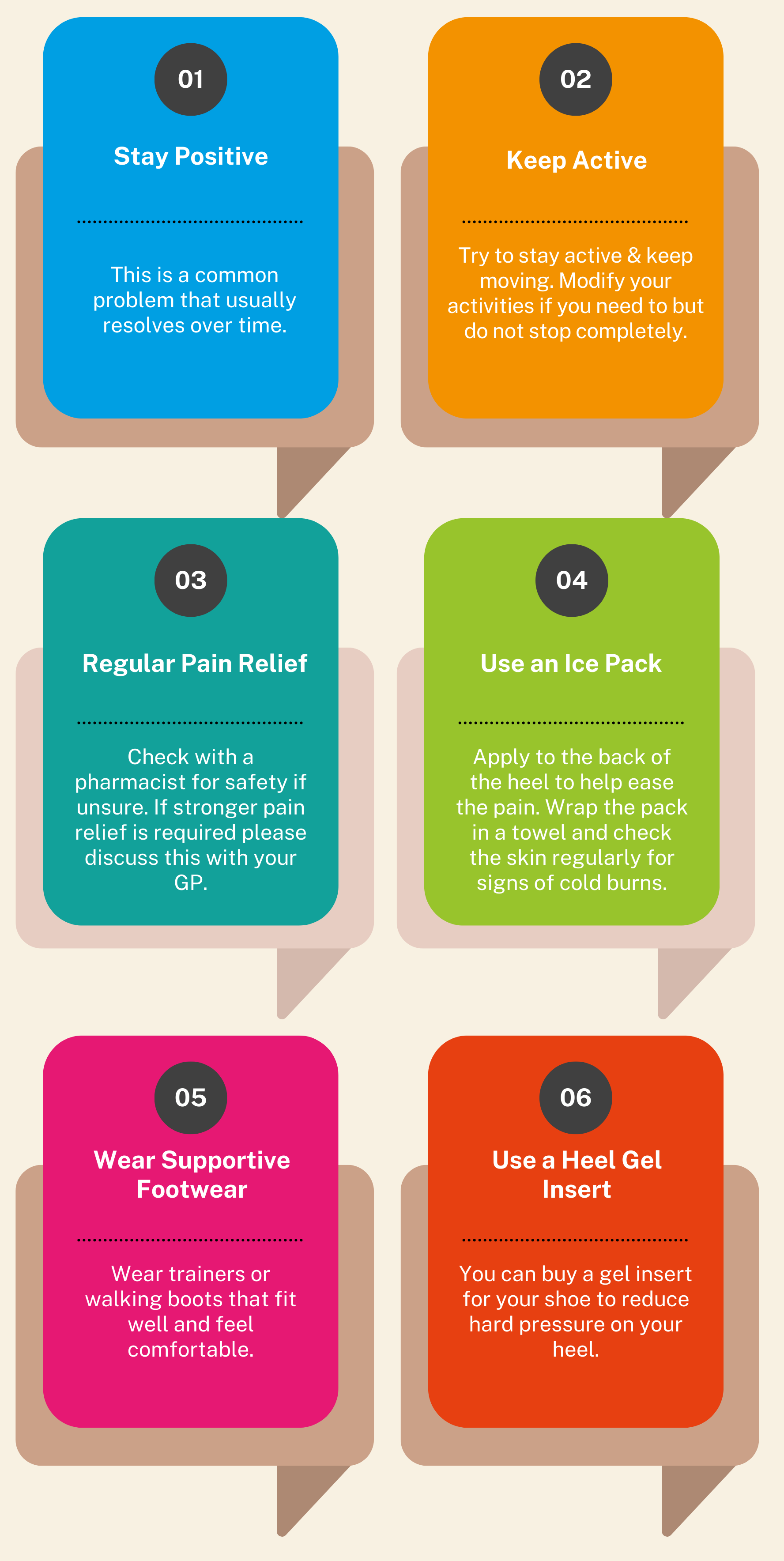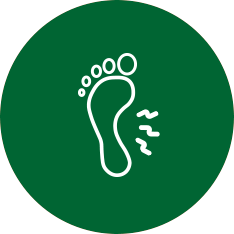Plantar Fasciitis
What is Plantar Fasciitis?
Plantar fasciitis is quite a common condition that causes pain on the bottom of your foot, around your heel.
The plantar fascia is a strong and thick band of tissue that runs from your heel bone (calcaneus) towards your toes. It supports the arch of your foot and acts as a shock absorber.
Symptoms occur when the plantar fascia tissue cannot cope with the amount of load that is placed on it.
What are the symptoms?
The symptoms can vary from mild to severe but typically include:
- Pain under the heel and into the middle of the foot
- Pain when you start walking, after sleeping or resting
- Pain can feel better after some moderate activity but often worsens later in the day
What are the causes?
The exact cause is not always known. For some, their symptoms may have developed gradually over time for no obvious reason, but for others the symptoms can start quickly after a specific injury or activity. Below is a list of some of the risk factors that may contribute to the symptoms:
- Being overweight
- Prolonged or sudden increase in time spent standing, walking or running.
- Poor fitting or unsupportive shoes
- Sudden change to exercise habits. This could include starting a totally new style of exercise or suddenly increasing how much you have been doing or the surface that you do it on
- Having a tight Achilles tendon. This can restrict how much movement you have in the ankle
- Age - typically affected people ages 40-60 years
For more information to help support your general health and well-being, please click here to access our "Healthy You" page. This includes information on exercise, mental health, smoking and weight management.
How long will it last?
Everyone's pain is different and full recovery can depend on multiple factors, but most people will make a full recovery. Most people will see some improvement following 6-12 weeks of lifestyle changes, advice, and an exercise program. The healing process can be slow and can take up to 18-24 months to fully resolve.
What can I do to help myself?

What else can I do?
A gradual increase in load once its less inflamed can help things improve. We have provided some exercises in the links below. Start with the easiest and build up to the more advanced exercises as you feel able to.
Plantar fasciitis exercises - EASY
Plantar fasciitis exercises - MODERATE
Plantar fasciitis exercises - ADVANCED
Do I need an x-ray or a scan?
In most cases, no. A good history and physical examination alone provides enough information to diagnose your problem. Scans and x-rays are not always useful for diagnosing plantar fasciitis. While a scan or x-ray may provide information it rarely alters the treatment plan.
Imaging findings are very poorly linked with pain and often people with no pain have very similar findings on their scans/x-rays to those that do. X-rays and scans can help for a small number of people in certain situations and will be recommended by a healthcare professional if required.
What about a steroid injection?
A steroid injection may be considered to help control the pain in some circumstances. The risks and benefits would be discussed with your Physiotherapist or GP and is not always an appropriate option for all patients.
Symptoms to check
Click the plus sign to see a list of problems that could be a sign you may need to be checked urgently
Get advice from 111 now if:
- your foot is very painful and you cannot put any weight on it
- you have direct injury to the foot and it has become very swollen very quickly
- your foot is badly swollen or has changed shape
- you heard a snap, grinding or popping noise at the time of injury
- you have a very high temperature, feel hot and shivery, and have redness or heat around the foot – this can be a sign of infection
111 will tell you what to do. They can tell you the right place to get help if you need to see someone.
Go to 111.nhs.uk or call 111.
Immediate medical advice is available by contacting NHS 111


 Foot
Foot